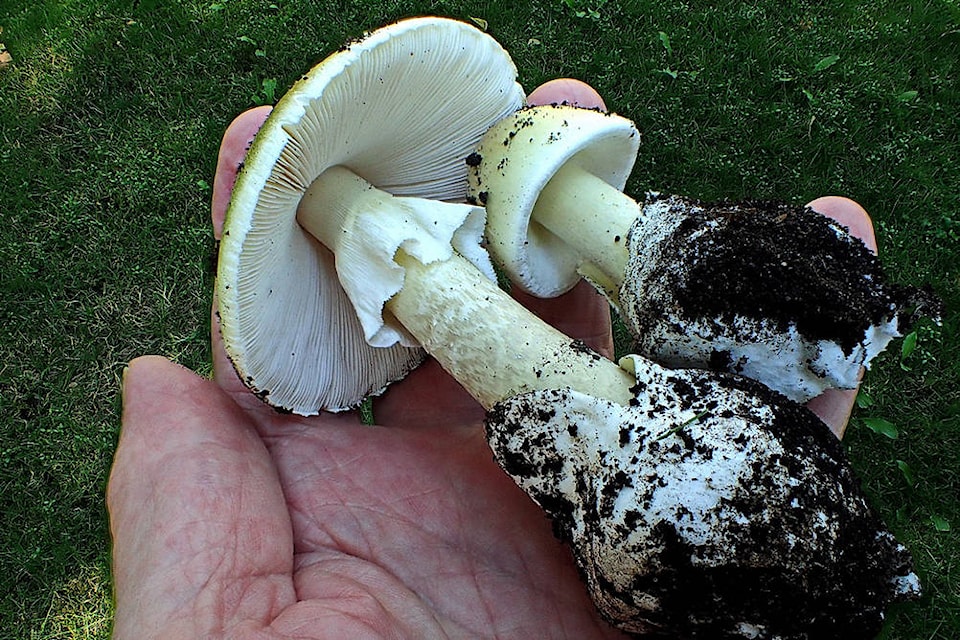As the weather begins to cool and the rain falls more frequently, mushrooms pickers throughout the province have begun foraging and the B.C. Centre for Disease Control calls for caution.
The death cap mushroom is not native to B.C. but can be found in urban environments including Vancouver, the Fraser Valley and Vancouver Island. In 2016 a toddler died after eating death caps on the Island.
RELATED: Victoria boy dies after ingesting poisonous mushroom
“We’ve had 30 calls between June and August about mushroom exposures and 16 in September alone,” said Raymond Li, pharmacist with the B.C. Drug and Poison Control Centre.
“Now that the rains are here, people are seeing mushrooms all over the place. The volume of calls we get about mushrooms is really dependent on the weather.”
Most of the calls poison control come from people who are worried about children or pets who may have taken a bite out of a mushroom they found, according to Li. He suggests taking the whole mushroom or careful pictures, in order for it to be properly identified.
The organization also gets calls from people who go out foraging for mushrooms and either have second thoughts after eating wild mushrooms or begin to feel unwell.
RELATED: Deadly mushrooms found in Greater Victoria
“I generally caution against foraging in urban environments because of the added risk,” said Paul Kroeger, pas president of the Vancouver Mycological Society.
“If you’re foraging, go to a natural forest and go with an expert; there are lots of mushroom clubs, events, and festivals.”
The death cap mushroom contains toxins that damage the liver and kidney, and people can experience the following symptoms within six to 12 hours:
- Cramping
- Abdominal pain
- Vomiting
- Watery diarrhea
- Dehydration
After 24 hours, people may feel better but the toxins may continue to damage vital organs. A second wave of nausea will occur within 72 hours after eating the mushroom, resulting in organ failure.
What to do if you find death cap mushrooms growing:
- Note the location, take careful photographs, and make a report
- Remove the mushrooms and dispose of them
- Touching death caps is not a risk but gloves are recommended
- Do not dispose of death cap mushrooms in your home compost
- Dispose of them in the municipal compost (green bins) or bag them and put them in the garbage
- Wash your hands after removing the mushrooms
If you suspect mushroom poisoning, call poison control immediately at 1-800-567-8911.
ragnar.haagen@bpdigital.ca
Like us on Facebook and follow us on Twitter
